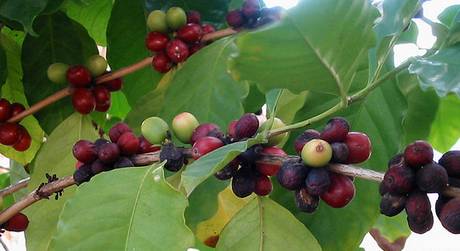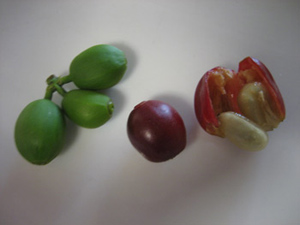Time for coffee and tea
A look at how green coffee beans are converted into the coffee drink we love
Physiology
Recommended Pages
From Coffee Bean to Brew: the Processing Steps of Coffee from Start to End
Coffee enthusiasts like to tell the legend of its origins. It starts with Kaldi, a goat herder in ancient Yemen, who one day found his goats romping in euphoric joy around a shrub with dark green leaves and bright red cherries on its branches. Kaldi decided to try the cherries and thus discovered the powerful stimulating effect of coffee.
It is a very appealing, quaint legend. But the more compelling botanical evidence points to different origin of the coffee bean. Botanical studies suggest that coffee began in the high plateaus of Caffa, Ethiopia and somehow found its way across the Red Sea to Yemen, where it was kept as a prized possession and cultivated at the start of the sixth century. From Yemen, a trader beat the ban on the transport of coffee, smuggled it to Mysore, India, and started cultivating it there.
 Photograph of Coffee berries growing on a tree by Macguys.
Photograph of Coffee berries growing on a tree by Macguys.
Producing Coffee Beans
 A picture of green coffee beans is shown on the left, it takes five years for a coffee plant to start bearing fruits, which turn from green beans to bright red when they ripen and for this reason, are called coffee cherries. The ripe cherry has two beans in it, surrounded by a thin hull and covered by pulp. The beans are separated from the hull and pulp, using specially designed pulping machines.
A picture of green coffee beans is shown on the left, it takes five years for a coffee plant to start bearing fruits, which turn from green beans to bright red when they ripen and for this reason, are called coffee cherries. The ripe cherry has two beans in it, surrounded by a thin hull and covered by pulp. The beans are separated from the hull and pulp, using specially designed pulping machines.
When the pulp is removed, a thin mucilaginous layer remains on the bean. Several methods are used to remove this layer, such as through microbial fermentation of heaped beans as is done with cacao beans, use of enzymes that digest pectin, and several washings. After removing the mucilage, there remains the problem of the hull.
The green coffee beans are then dried, to reduce moisture level to 12% (from a high 53%). Sun-drying is the cheapest method, but drying machines are preferred, for their ability to provide uniform temperatures, which is crucial to the final flavor of the coffee. Once the beans reach 12% moisture, it becomes easier to remove the hull by mechanical means. The liberated beans are then graded. At this point, the graded beans are sampled to get an idea of its brewing quality.
Blending Coffee Beans
Coffee beans will have distinct tastes, depending on their origin and type. You never get just one type because manufacturers will blend beans to achieve the unique flavor of their brand. The manufacturers have specific component beans in mind, and their procurement programs will mean buying coffee beans from several countries.
Roasting Coffee Beans
Roasting develops the flavor of coffee. Just like drying, uniform temperatures must be maintained by roasting equipment, which may be batch or continuous roasters. Modern continuous roasters control roasting time of green beans, temperature and humidity. The formulation and combination of green coffee bean blends fed into the roasting step are carefully controlled by computers in modern processing facilities. Manufacturers usually roast beans for 5 minutes at gas temperatures of 260oC.
Grinding Coffee Beans
After cooling the roasted coffee beans, these are ground to sizes that depend on the size of bits used. The average particle size and the distribution of sizes around the average, will affect the properties of the coffee when brewed, its brewing time, and storage stability. Coffee flavor and aromatic properties need to be preserved, thus ground coffee is packed in hermetic packages to enable long storage periods.
The Art of Brewing Coffee
Many variables influence the process of brewing coffee to achieve the desired strength and flavor. These include the proportions of coffee and water, particle size, water temperature, the mixing mechanism of the brewing equipment, and brewing time. There is an optimum degree of extraction to achieve the best flavor, and this is something that is mastered by close observation over time. Bear in mind that over-extraction beyond this optimum will introduce bitter constituents from the bean into the brew. You would not want that to happen to your coffee.
Reference.Arya, Meenakshi and Rao, L. Jagan Mohan (2007) 'An Impression of Coffee Carbohydrates', Critical Reviews in Food Science and Nutrition, 47:1, 51 - 67